Reflections are an essential element of photography that can add depth, interest, and beauty to your images. They can be found in a variety of settings, from natural landscapes to urban cityscapes, and can be captured in many different ways.
Reflections are a powerful tool in photography. They can be used to create stunning images that are both visually interesting and thought-provoking.
How to use reflections in photography
-
Add a sense of depth and dimension to your images
By capturing a reflection, you can create a mirror image of your subject, which can make your photo appear more three-dimensional. This effect can be particularly striking when photographing water, as the reflection can create a sense of symmetry and balance in your image.
-
Add interest and beauty to your photos:
They can create patterns, textures, and colors that can make your image more visually appealing. For example, the reflection of a sunset on a calm lake can create a stunning and vibrant image that captures the beauty of nature.
-
To create symmetry
Reflections can be used to create symmetrical images, which can be very pleasing to the eye. For example, you can use a mirror to reflect a landscape, making it appear as if the landscape continues on behind you.
-
To create illusions
Reflections can be used to create illusions, such as making an object appear larger or smaller than it actually is. For example, you can use a puddle to reflect a tree, making the tree appear to be floating in the air.
-
To highlight details
Reflections can be used to highlight the details of an object. For example, you can use a polished metal surface to reflect the details of a flower, making the flower appear to be glowing.
-
to convey a message or tell a story
For example, a reflection of a person in a window can create a sense of introspection or contemplation, while a reflection of a city skyline can convey the hustle and bustle of urban life.

Photo by Depositphotos
What is light reflection?
Light reflection is the process of light bouncing off of a surface and changing direction. When light hits a surface, some of it is absorbed, some of it is transmitted, and some of it is reflected. The amount of light that is reflected depends on the properties of the surface. Smooth surfaces reflect more light than rough surfaces.
Light reflection can affect the view in a number of ways. It can be used to create illusions, to add depth to a scene, and to highlight certain objects. For example, a mirror can be used to create the illusion of a larger space. A body of water can be used to reflect the sky and clouds, adding depth and interest to a scene. And a polished metal surface can be used to highlight the details of an object.
Here are some examples of how light reflection can be used in photography:
-
Bodies of water:
Lakes, rivers, and oceans are all great places to find reflections. The water can reflect the sky, clouds, trees, and other objects, creating stunning and interesting images.
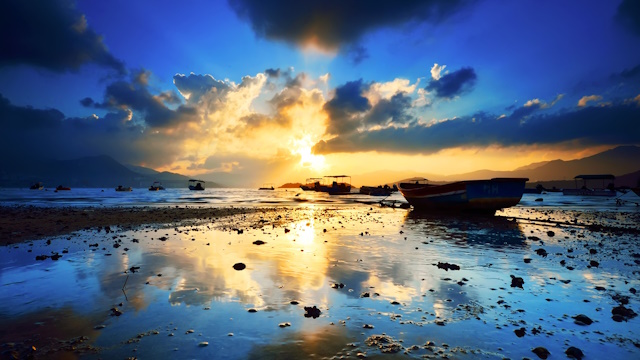
Photo by Depositphotos
-
Windows:
Windows can be used to reflect the outside world, creating a unique perspective on your surroundings. You can also use windows to reflect objects inside a room, creating a sense of depth and interest.

Photo by Dpositphotos
-
Mirrors:
Mirrors can be used to create creative photos. They can be used to create illusions and add depth to a scene. You can also use mirrors to reflect the subject of your photograph, creating a self-portrait.

Photo by Depositphotos
-
Polished metal surfaces:
Polished metal surfaces can be used to highlight the details of an object. For example, you can use a polished metal surface to reflect the details of a flower, making it appear as if the flower is floating in the air.
By understanding how light reflection works, you can use it to create stunning and interesting photographs.
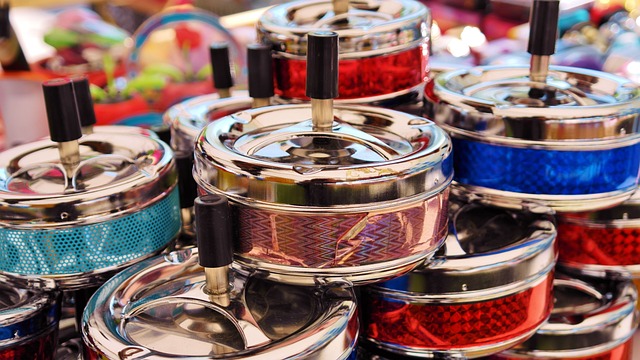
Photo by Image by –Rita- und mit from Pixabay
Photography Reflections Tips
1- Choose the Right Location
When it comes to capturing stunning reflections in your photographs, choosing the right location is key. The right location can make all the difference in the quality of your photos. Here are some tips to help you find the perfect location for your reflection photography.
The location you choose for your reflection photography can greatly impact the final result of your photos. A good location can provide you with the perfect reflection, while a bad location can ruin your shot. The right location can also help you capture the mood and atmosphere you want to convey in your photos.
Tips for finding the perfect location
- Look for still water: Reflections are best captured on still water, such as a lake or a pond. Look for a location with calm water to get the best reflection.
- Look for interesting subjects: A reflection can add depth and interest to your photo. Look for interesting subjects to capture in your reflection, such as a beautiful landscape or an interesting building.
Finding the right location for your reflection photography is crucial to capturing stunning photos. By following these tips, you can find the perfect location and take your photography to the next level.

Photo by Depositphotos
2- Consider the Time of Day
When it comes to capturing reflections in your photography, the time of day can greatly affect the final result. Here’s how the time of day affects reflections and the best times of day for capturing them.
-
How the time of day affects reflections
The time of day can greatly affect the quality of your reflection. During the middle of the day, the sun is high in the sky, which can create harsh shadows and make it difficult to capture a good reflection. In contrast, during the early morning or late afternoon, the sun is lower in the sky, which creates softer, more diffused light. This light is ideal for capturing reflections as it enhances the colors and details in the reflection.
-
Best times of day for capturing reflections
The best times of day for capturing reflections are early morning and late afternoon. During these times, the light is softer and more diffused, which creates a more natural and beautiful reflection. Additionally, during these times, the sun is lower in the sky, which means that you can capture a reflection without having to deal with harsh shadows.
If you’re looking to capture a reflection during the middle of the day, you can still get a good shot by finding a location with shade or using a polarizing filter.
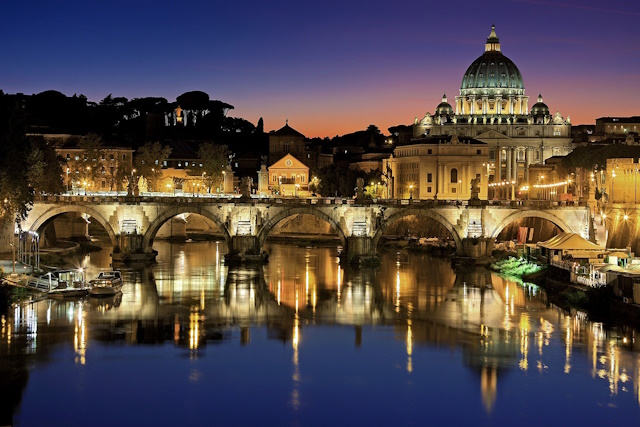
Image by Julius Silver from Pixabay
3- Choose the right lens & camera setting
When it comes to capturing stunning reflections in photography, camera, and lens settings are crucial. In this section, we will discuss some tips for setting up your camera and lens to capture the best possible reflection shots in landscape photography.
First and foremost, it’s important to choose the right lens for the job. A wide-angle lens can be particularly useful for capturing reflections in landscape photography, as it allows you to capture a wider field of view and can create a more dramatic effect.
Once you’ve chosen your lens, it’s time to set up your camera. Selecting the right aperture is important for ensuring that the entire photo is in focus.
When shooting landscapes, you may want to use a higher aperture, such as f/8 or f/11, to ensure that everything in the scene is in focus. This is particularly important when shooting landscapes with a lot of depth, such as mountains or forests.
Using a higher aperture can also help you achieve a sharper image overall. However, be careful not to use too high of an aperture, as this can result in diffraction, which can make your image appear less sharp.
Another important setting to consider is your shutter speed. When shooting reflections in landscape photography, it’s important to use a fast shutter speed to avoid any blurring or distortion in your image. A shutter speed of at least 1/250th of a second is recommended, although you may need to adjust this depending on the lighting conditions and other factors.
Finally, it’s important to consider your ISO setting. When shooting in low-light conditions, you may need to increase your ISO to capture enough light. However, be careful not to set your ISO too high, as this can result in a grainy or noisy image.
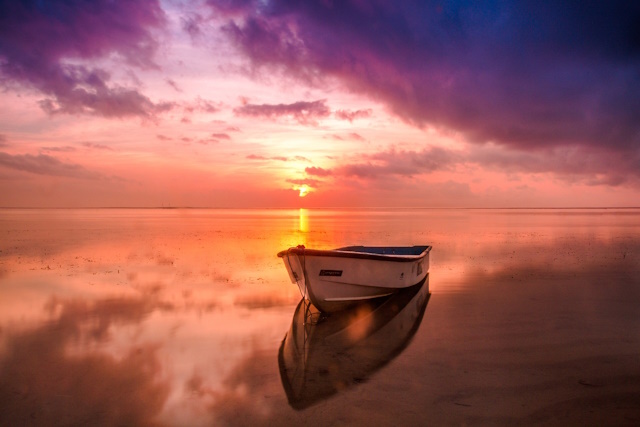
4- Use a Polarizing Filter
Using a polarizing filter can make a big difference. So, let us discuss what a polarizing filter is and how they work, as well as the benefits of using them for reflections.
-
What are polarizing filters and how they work
A polarizing filter is a type of camera filter that helps reduce glare and reflections in your photos. It works by blocking certain light waves that cause glare and reflections while allowing other light waves to pass through. This results in a clearer, more vibrant image with better color saturation.
-
Benefits of using a polarizing filter for reflections
Using a polarizing filter for reflection photography can provide several benefits. First, it can help reduce glare and reflections on the surface of the water, which can make it easier to capture a clear reflection.
Second, it can enhance the colors and details in the reflection, making it more vibrant and eye-catching.
Finally, it can help reduce the amount of light entering the camera, which can result in a longer exposure time and a smoother, more serene reflection.
In conclusion, using a polarizing filter can greatly enhance your reflection photography. By reducing glare and enhancing colors and details, a polarizing filter can help you capture stunning reflection photos that will impress your audience.

5- Experiment with Angles and Perspectives
If you want to take your reflection photography to the next level, it’s important to experiment with different angles and perspectives. Here’s why it’s important to experiment with angles and perspectives, as well as some tips for finding unique angles and perspectives.
Experimenting with different angles and perspectives can help you capture unique and interesting reflection photos. By changing your perspective, you can create a different mood or atmosphere in your photos. Additionally, experimenting with angles can help you find the perfect shot and capture the reflection in a way that is both creative and visually appealing.
Here are some Tips for finding unique angles and perspectives
- Get low: Try shooting from a low angle to capture the reflection from a different perspective. This can create a more dramatic and interesting photo.
- Shoot from above: Shooting from above can provide a unique perspective and create a more abstract reflection photo.
- Use a wide-angle lens: A wide-angle lens can help you capture more of the reflection and create a more immersive photo.
- Look for interesting reflections: Sometimes, the reflection itself can provide a unique perspective. Look for interesting reflections, such as reflections of buildings or trees, to create a visually stunning photo.
- Experiment with framing: Try framing the reflection in a unique way, such as using a frame within a frame, to create a more interesting and dynamic photo.
In conclusion, experimenting with different angles and perspectives can help you capture unique and visually stunning reflection photos. By trying out different techniques and perspectives, you can take your reflection photography to the next level and create photos that truly stand out.

6- Pay Attention to Composition
Photography composition is a key element in taking amazing shots. It can make or break a shot, especially when it comes to capturing reflections. Reflections can add depth and interest to your photos, but they can also be tricky to capture.
Here are some tips for composing your shot for the best reflection.
First and foremost, pay attention to your surroundings. Look for reflective surfaces such as water, glass, or metal. These surfaces can create interesting reflections that can add a unique element to your photos.
Another important aspect of composition is framing. Consider what you want to include in your shot and what you want to leave out.
Use the rule of thirds to create a balanced composition, and consider using leading lines to draw the viewer’s eye towards the reflection.
Finally, don’t be afraid to get creative with your composition. Try shooting from unusual angles or incorporating other elements into your shot to create a unique reflection.
7- Play with Light and Shadows
Light and shadows can have a big impact on the way reflections appear in your photos. By playing with light and shadows, you can enhance your reflection and create a more dynamic and interesting image.
Here are some tips for using light and shadows to enhance your reflection.
First, consider the direction of the light. Side lighting can create interesting shadows and highlights, while backlighting can create a more dramatic effect. Experiment with different lighting angles to see what works best for your shot.
Next, think about the quality of the light. Soft, diffused light can create a more subtle reflection, while harsh, direct light can create a more dramatic effect. Shadows can also play a big role in enhancing your reflection. By using shadows to frame your reflection, you can create a more dynamic and interesting image. Look for natural shadows or create your own using props or other objects.
Another way to play with light and shadows is to use a technique called “chiaroscuro”. Chiaroscuro is a technique commonly used in visual arts, including photography, to create a strong contrast between light and dark areas within an image. The term “chiaroscuro” originated from the Italian words “chiaro” (light) and “scuro” (dark), and it refers to the dramatic interplay of light and shadow.
In photography, chiaroscuro involves intentionally using strong contrasts between light and shadow to enhance the visual impact and create a sense of depth and three-dimensionality in an image. This technique can evoke a range of emotions and moods, depending on how the light and shadow are utilized.

Photo by Deositphotos
8- Use a tripod
Using a tripod can make a big difference when it comes to capturing reflections in your photos. A tripod can help you keep your camera steady, which is especially important when shooting in low light conditions or using a slow shutter speed. Here are some tips for using a tripod to capture stunning reflection photos.
First, make sure your tripod is sturdy and stable. Look for a tripod with a weight capacity that can support your camera and lens. Consider using a tripod with a ball head, which allows for easy adjustments and leveling.
Next, use a remote shutter release or self-timer to avoid camera shaking when taking the shot. This will help ensure that your photo is sharp and in focus.
When setting up your shot, take your time to adjust the height and angle of your tripod. Consider using a spirit level to ensure that your camera is level and straight.
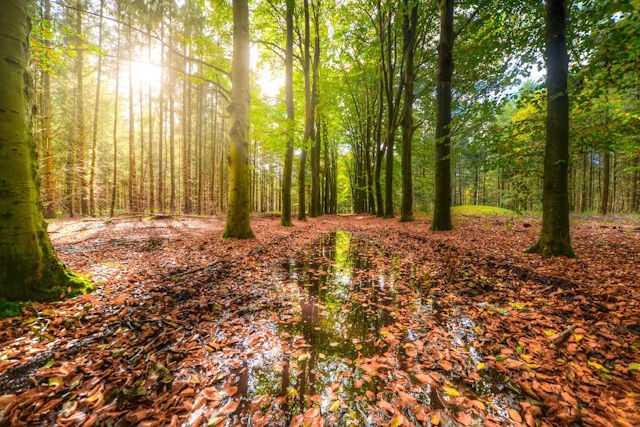
Image by Rudy and Peter Skitterians from Pixabay
9- Create reflection in post-processing
It is possible to add a reflection to an image using post-processing software such as Photoshop. There are several ways to create a reflection in Photoshop.
One method involves enhancing the reflection that is already captured in your image. This method allows you to adjust the reflection to your liking without having to create it from scratch.
Another method involves creating a reflection from scratch using various tools and techniques in Photoshop.
If you’re interested in learning more about how to create a reflection in Photoshop, you may check my posts “How To Add Reflection In Photoshop” and “The Greatest Photoshop Update Ever- The Generative Fill”
Conclusion
Reflections are a powerful element in photography that add depth, interest, and beauty to images. They can be used to create symmetry, convey messages, highlight details, and enhance compositions.
Understanding light reflection and using techniques like choosing the right location, considering the time of day, using a polarizing filter, experimenting with angles, and playing with light and shadows can help capture stunning reflection photos.
Using a tripod ensures stability and sharpness. Mastering these tips can elevate your photography and create captivating reflection images.
Remember, capturing stunning reflections takes practice and patience. With these tips and tricks, you’ll be well on your way to creating breath-taking photos that capture the beauty of reflections.
Related posts
Water Reflections Photography – A Brief Guide
How To Add Reflection In Photoshop
The Greatest Photoshop Update Ever- The Generative Fill
Thanks for reading, I hope you enjoyed the article, in case you have any questions just drop them below & I will be happy to answer you.
The featured image by PublicDomainPictures from Pixabay
If you enjoy the site, don’t forget to subscribe, we will only inform you when a new article is posted.






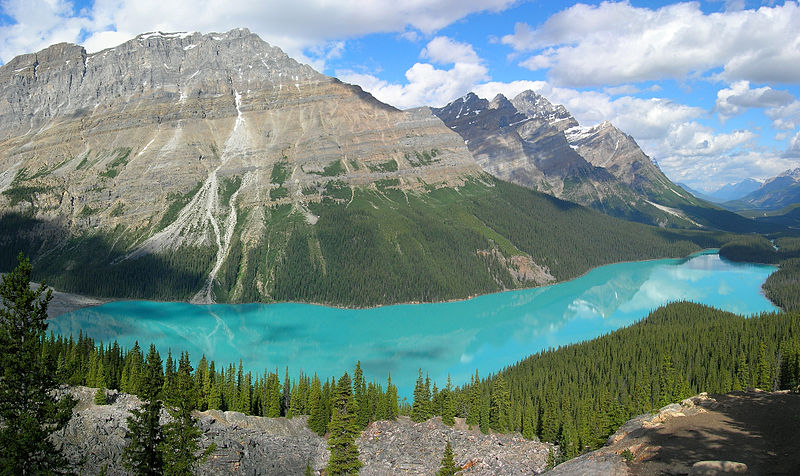
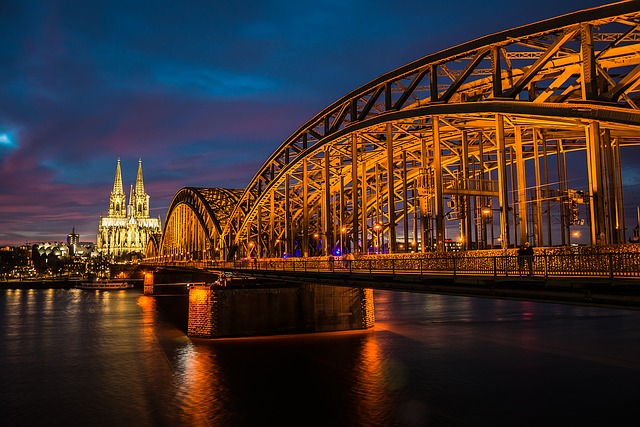

Reflections is definitely one of the most interesting effects of photography. I like mostly those that create optical illusions as they trick your brain and you cannot understand what is really happening in the photo. It’s amazing in what lengths people go to create such photos. It is definitely an art by itself.
Thank you for your comment! I completely agree that reflections can create fascinating optical illusions in photography. It’s amazing how a simple reflection can transform an ordinary scene into something surreal and thought-provoking. The art of capturing reflections can indeed require a lot of creativity and skill, and it’s always exciting to see how photographers push the boundaries to create unique and captivating images.
This is an incredibly comprehensive and insightful guide on using reflections in photography! I truly appreciate the effort you put into explaining the different ways reflections can enhance images and the tips you provided for capturing them effectively.
Your explanation of how reflections can add depth, interest, and beauty to photos is spot-on. I particularly liked how you mentioned using reflections to create symmetry and illusions, as well as to highlight details and convey a message or story. It’s fascinating how something as simple as a reflection can have such a significant impact on the overall composition and narrative of a photograph.
Thank you so much for your kind words! I’m thrilled to hear that you found my guide on using reflections in photography comprehensive and insightful. Reflections can indeed be a powerful tool for enhancing images and conveying a message or story. I’m glad that you found my tips for capturing reflections helpful, and I hope that you’ll be able to apply them to your own photography. If you have any further questions or feedback, please don’t hesitate to let me know.